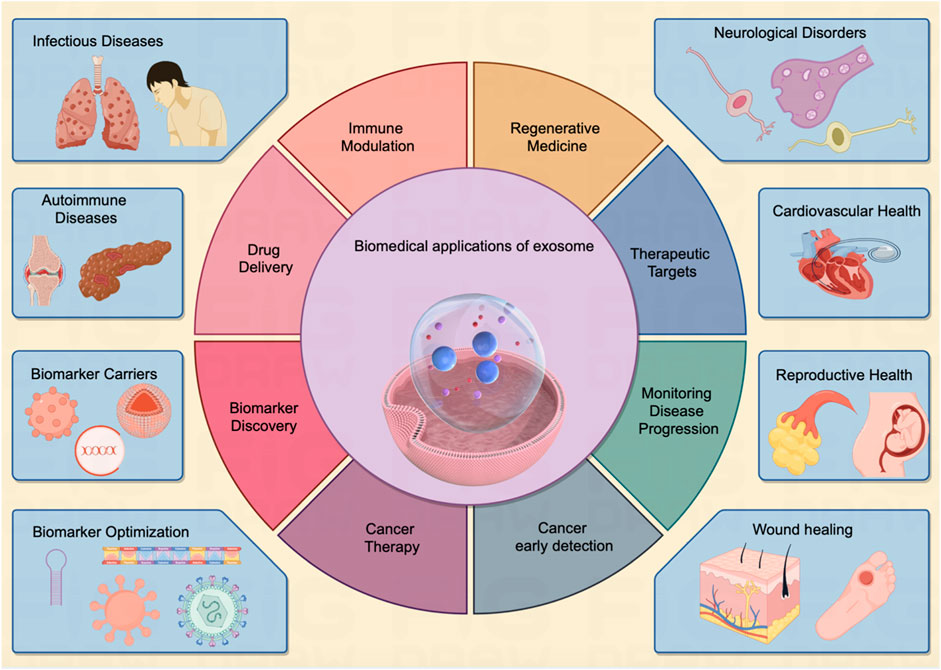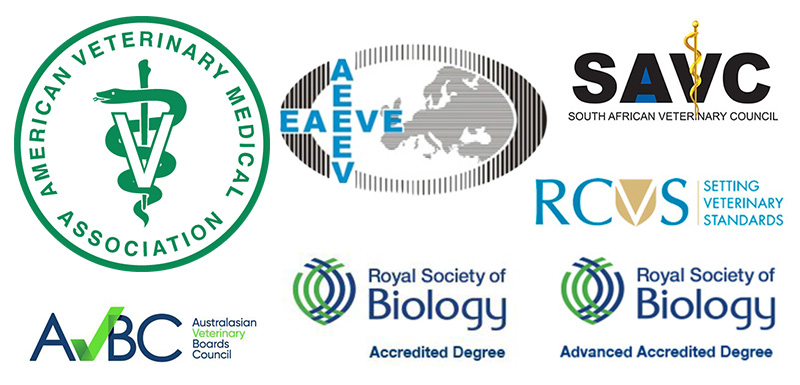Report on the U.S. Food and Drug Administration Panel on Antidepressant Use During Pregnancy and Its Implications for Sustainable Development Goals
Introduction
A recent panel convened by the U.S. Food and Drug Administration (FDA) to discuss the use of Selective Serotonin Reuptake Inhibitors (SSRIs) during pregnancy has generated significant concern. The panel’s composition and the nature of its discourse represent a departure from evidence-based scientific consensus, posing direct challenges to the achievement of several United Nations Sustainable Development Goals (SDGs), most notably SDG 3 (Good Health and Well-being), SDG 5 (Gender Equality), and SDG 16 (Peace, Justice and Strong Institutions).
Analysis of the FDA Panel and its Contradiction of Scientific Consensus
Panel Composition and Presented Arguments
The panel, organized to “challenge or defend current dogma,” was predominantly composed of individuals known for their critical and often unscientific views on psychiatric medications. Key perspectives presented by the majority of panelists included:
- Assertions of a link between antidepressant use and adverse outcomes such as autism, ADHD, miscarriages, and cardiac birth defects.
- Claims that SSRIs are ineffective in treating depression and function by “emotional numbing” akin to alcohol or opioids.
- Arguments that depression is a natural “emotional experience” that should not be medicalized.
Of the ten panelists, only one, a specialist in maternal mood disorders, represented the established medical consensus, arguing for the safety and efficacy of SSRIs in pregnancy. This expert’s viewpoint was significantly outnumbered and presented as merely one of two “different points of view.”
The Established Scientific and Medical Consensus
The prevailing view within the global health community, as articulated by organizations like the American College of Obstetricians and Gynecologists (ACOG), stands in stark contrast to the panel’s dominant narrative. The consensus includes the following points:
- Safety of SSRIs: Robust evidence indicates that most SSRIs are safe for use during pregnancy and do not increase the risk of most birth defects. They are among the most studied medications for pregnant women.
- Risk of Untreated Depression: The risks associated with untreated maternal depression are considered far greater than the potential risks of medication. Mental health conditions are a leading cause of pregnancy-related mortality, primarily due to suicide and substance abuse.
- Maternal and Fetal Health: Untreated depression can lead to poor maternal self-care and is associated with adverse outcomes such as preterm birth, low birth weight, and preeclampsia.
Impact on Sustainable Development Goals (SDGs)
SDG 3: Good Health and Well-being
The panel’s proceedings directly undermine several targets within SDG 3, which aims to ensure healthy lives and promote well-being for all at all ages.
- Target 3.1 (Maternal Mortality): By promoting fear and misinformation about necessary medical treatments, the panel’s rhetoric could lead pregnant women to discontinue medication, increasing their risk for severe depression, suicide, and other factors contributing to pregnancy-related death.
- Target 3.4 (Mental Health and Well-being): The platforming of pseudoscience that questions the validity of depression as a medical condition and discourages proven treatments is a direct assault on the promotion of mental health.
- Target 3.8 (Universal Health Coverage): This target includes access to safe, effective, and affordable essential medicines. By casting doubt on the safety and efficacy of SSRIs, the FDA’s actions threaten to create barriers to essential healthcare for a vulnerable population.
SDG 5: Gender Equality
The panel’s discourse also has negative implications for SDG 5, which seeks to achieve gender equality and empower all women and girls.
- Target 5.1 (End Discrimination): The framing of women’s emotional experiences as “gifts” and the dismissal of their mental health struggles is a patronizing and discriminatory viewpoint. It invalidates women’s health concerns and reinforces harmful stereotypes, undermining their right to receive appropriate medical care.
SDG 16: Peace, Justice and Strong Institutions
The event calls into question the integrity of public health bodies, impacting SDG 16, which focuses on building effective, accountable, and inclusive institutions.
- Target 16.6 (Effective, Accountable, and Transparent Institutions): By sponsoring a panel that prioritizes fringe theories over scientific consensus, the FDA appears to be failing in its duty as an accountable and effective institution responsible for public health. This action erodes public trust in scientific bodies and evidence-based governance.
Systemic Failures and Contributing Factors
The Role of Misinformation and Commercial Interests
A significant number of the panelists are media personalities, podcasters, and authors who have built personal brands and financial interests around challenging mainstream medicine. The promotion of their views on a government platform lends them undue credibility, conflating personal opinion and commercial enterprise with expert medical guidance.
Gaps in Medical Research
The report acknowledges a critical gap: the lack of randomized controlled trials for SSRIs in pregnant women, partly due to ethical considerations and a lack of prioritization. This information vacuum is exploited by those promoting misinformation. Notably, government funding cuts to the National Institutes of Health (NIH) have reportedly stalled plans for a working group to address this very research gap, creating a scenario where the administration has substituted scientific inquiry with the promotion of conspiracy theories.
Conclusion
The FDA panel on SSRIs and pregnancy represents a concerning move away from evidence-based public health policy. By amplifying misinformation and fringe theories, the panel actively undermines progress toward key Sustainable Development Goals, particularly those related to health, gender equality, and institutional integrity. The prioritization of unsubstantiated claims over scientific consensus threatens the well-being of pregnant women and their children. A return to policies grounded in rigorous scientific evidence and adequate funding for crucial medical research is imperative for upholding public health and meeting global development objectives.
Analysis of Sustainable Development Goals in the Article
1. Which SDGs are addressed or connected to the issues highlighted in the article?
-
SDG 3: Good Health and Well-being
The article is fundamentally about health. It focuses on mental health conditions like depression and anxiety, particularly in pregnant women. It discusses the treatment of these conditions with antidepressants (SSRIs), the risks of untreated depression for maternal and infant health, and the quality of public health information provided by a government agency (the FDA).
-
SDG 5: Gender Equality
The article specifically addresses a health issue concerning women (depression during pregnancy). It also highlights how the debate is framed with “a particularly reverent and patronizing idea of womanhood,” questioning if women are just “naturally experiencing their emotions more intensely” and calling them “gifts.” This undermines women’s health concerns and their autonomy in making medical decisions, connecting directly to gender equality and empowerment.
-
SDG 16: Peace, Justice and Strong Institutions
A central theme is the critique of a public institution, the Food and Drug Administration (FDA). The article argues that the FDA, under new leadership, is failing in its duty to provide the public with “the best available medical science.” Instead, it is platforming misinformation and “fringe skeptics,” thereby undermining its credibility and effectiveness as an accountable and transparent institution.
2. What specific targets under those SDGs can be identified based on the article’s content?
-
Target 3.4: By 2030, reduce by one third premature mortality from non-communicable diseases through prevention and treatment and promote mental health and well-being.
The article directly engages with this target by discussing the treatment of depression, a non-communicable disease. The entire debate centers on the value and safety of SSRIs for promoting mental well-being. The article states that “mental health conditions are the most common cause of ‘pregnancy-related death,’ largely because of overdoses, alcohol abuse, and suicide,” linking the failure to treat mental illness directly to premature mortality.
-
Target 3.1: By 2030, reduce the global maternal mortality ratio to less than 70 per 100,000 live births.
This target is relevant because the article explicitly links untreated maternal depression to negative health outcomes. It quotes the American College of Obstetricians and Gynecologists (ACOG), stating that untreated depression puts patients at risk for “preterm birth, preeclampsia, and low birth weight” and is a leading cause of “pregnancy-related death.”
-
Target 3.8: Achieve universal health coverage, including financial risk protection, access to quality essential health-care services and access to safe, effective, quality and affordable essential medicines…
The discussion revolves around access to SSRIs, which are essential medicines for many people with depression. The article questions the quality of health services when the primary government agency (FDA) provides confusing and misleading information. It also implicitly touches on affordability by mentioning a panelist who owns a “private ‘tapering clinic’ that charges patients tens of thousands of dollars,” which is the opposite of affordable care.
-
Target 5.c: Adopt and strengthen sound policies and enforceable legislation for the promotion of gender equality and the empowerment of all women and girls at all levels.
The article critiques the FDA’s new policy direction, which disproportionately affects women by disseminating misinformation about a critical women’s health issue. This action disempowers women, preventing them from making informed decisions about their health during pregnancy. The panel’s rhetoric, which dismisses women’s emotional experiences as something other than a medical concern, works against their empowerment.
-
Target 16.6: Develop effective, accountable and transparent institutions at all levels.
The article is a direct critique of the FDA’s effectiveness and accountability. It describes how the FDA panel “buried that expert consensus under a barrage of misinformation, speculation, conspiracist theorizing, and pseudoscience.” This action represents a failure of the institution to be transparent about the scientific consensus and accountable to the public it is meant to serve.
3. Are there any indicators mentioned or implied in the article that can be used to measure progress towards the identified targets?
-
Maternal Mortality Ratio and Causes of Pregnancy-Related Death
The article explicitly mentions that “mental health conditions are the most common cause of ‘pregnancy-related death.'” Tracking the maternal mortality ratio and the specific causes of death (e.g., suicide, overdose) would be a direct indicator of progress in addressing the issues of untreated maternal depression.
-
Prevalence of Antidepressant Use
The article provides a statistic that “more than 1 in 10 Americans take some kind of antidepressant.” This figure serves as an indicator of the scale of treatment for depression and the number of people potentially affected by policy changes and misinformation regarding these medications.
-
Rates of Negative Birth Outcomes
The article notes that untreated depression can lead to “preterm birth, preeclampsia, and low birth weight.” The incidence rates of these conditions, particularly among women with diagnosed depression, can serve as indicators to measure the impact of mental healthcare on maternal and infant health.
-
Public Trust in Health Institutions
While not a formal statistic, the article heavily implies a decline in public trust. It describes how a pregnant woman would “come away without a sense of confusion and anxiety” and how the FDA’s actions mainstream “fringe skeptics of modern medicine.” Measuring public trust in institutions like the FDA is a key, albeit qualitative, indicator of their effectiveness and accountability.
-
Funding for Medical Research
The article concludes by noting that the FDA had planned research on SSRIs in pregnancy, but “because of the Trump administration’s cuts to the National Institutes of Health, that work has stalled.” The level of government funding allocated to medical research, especially in understudied areas like medication use in pregnancy, is a tangible indicator of the commitment to evidence-based policymaking.
4. Summary of SDGs, Targets, and Indicators
| SDGs | Targets | Indicators |
|---|---|---|
| SDG 3: Good Health and Well-being |
3.1: Reduce the global maternal mortality ratio.
3.4: Reduce premature mortality from non-communicable diseases and promote mental health. 3.8: Achieve universal health coverage, access to quality essential health-care services, and safe, effective medicines. |
– Maternal mortality ratio and causes of “pregnancy-related death” (e.g., suicide). – Rates of negative birth outcomes (preterm birth, preeclampsia, low birth weight). – Prevalence of antidepressant use (“more than 1 in 10 Americans”). – Public access to and trust in essential medicines (SSRIs). |
| SDG 5: Gender Equality | 5.c: Adopt and strengthen sound policies for the promotion of gender equality and the empowerment of all women. |
– Existence of policies ensuring women’s access to accurate health information. – Public discourse that respects women’s health autonomy versus “patronizing idea[s] of womanhood.” |
| SDG 16: Peace, Justice and Strong Institutions | 16.6: Develop effective, accountable and transparent institutions at all levels. |
– Public trust in health institutions (e.g., the FDA). – Level of government funding for essential medical research (e.g., NIH funding for SSRI studies). – Adherence of public bodies to scientific consensus versus promoting “misinformation, speculation, conspiracist theorizing, and pseudoscience.” |
Source: slate.com







